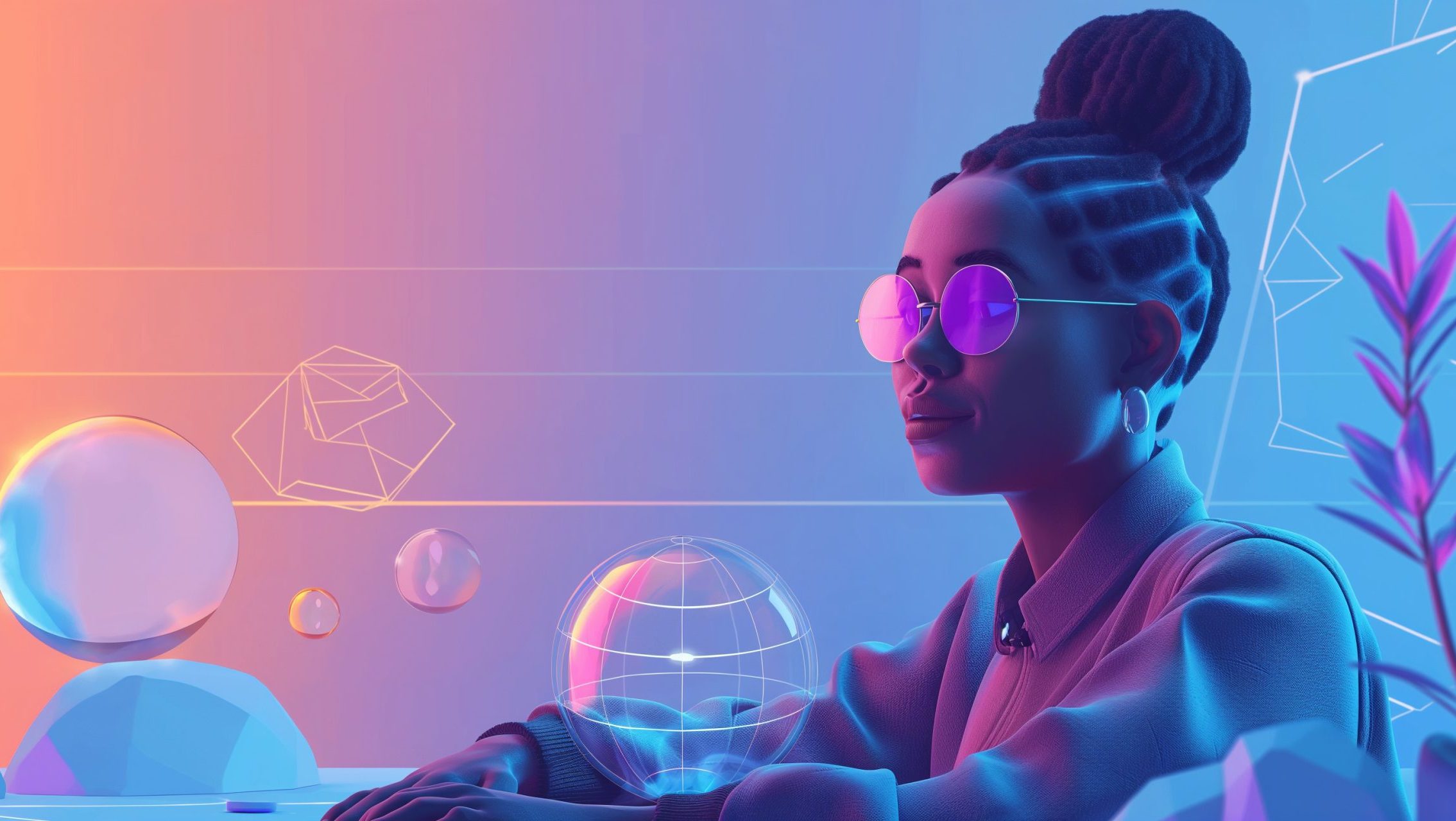5 AI Design Trends You Need to Know About in 2024: The Future of Web Design is Here
The world of web design is undergoing a revolution, driven by the ever-evolving power of Artificial Intelligence (AI). These AI design trends are not just about creating fancy visuals; they’re fundamentally changing how websites are built, optimized, and experienced by users.
In 2024, we can expect AI to play an even more significant role in web design. This blog post dives into five key AI design trends that will shape the future of the web:
1. Immersive 3D Design: Breaking the Bounds of the Flat Screen
For years, web design has been confined to the limitations of the two-dimensional screen. However, AI is paving the way for a more immersive web experience with the rise of 3D design.
Imagine a potential customer being able to virtually walk through a product showroom on your website, or explore a 3D model of a new architectural design. AI tools are making it easier than ever to create these interactive 3D experiences.
- AI-powered 3D Modeling: AI algorithms can analyze 2D images and automatically generate high-quality 3D models. This eliminates the need for manual modeling, saving designers significant time and resources.
- Real-time Rendering: Advancements in AI enable real-time rendering of 3D models within a web browser, eliminating the need for plugins or downloads. This creates a seamless user experience without any technical hurdles.
- Personalized 3D Interactions: AI can personalize the 3D experience based on user behavior and preferences. For example, a furniture website could allow users to virtually place furniture in their own homes.
The potential impact of AI-powered 3D design is vast. It can revolutionize how users interact with products, services, and information on the web. This technology can be particularly beneficial for industries like e-commerce, architecture, education, and entertainment.
2. AI in UX/UI Design: Optimizing for User Experience and Delight
User Experience (UX) and User Interface (UI) design are fundamental pillars of any successful website. Traditionally, these processes require significant human effort and expertise. However, AI is now making significant inroads into the UX/UI design landscape.
- AI-powered User Research and Testing: AI can analyze user behavior data from various sources to identify user needs, pain points, and preferences. This data can then be used to inform UX design decisions and create a more intuitive and user-friendly experience.
- Personalized UI Design: AI can personalize the website interface based on individual users. This could involve tailoring the layout, content, and functionality to each user’s specific needs and preferences.
- A/B Testing on Steroids: AI can automate A/B testing, a technique used to compare different design variations and determine which one performs better. This allows designers to optimize for user engagement and conversion rates much faster and more efficiently.
The impact of AI on UX/UI design is significant. It can lead to websites that are not only aesthetically pleasing but also intuitively designed to meet the specific needs of each user. This ultimately translates to a more satisfying and engaging user experience, leading to improved brand loyalty and conversion rates.
3. The Next Generation of Generative AI: Design at the Speed of Thought
One of the most exciting AI design trends is the emergence of next-generation generative AI models. These models can create entirely new design elements – from layouts and color palettes to logos and illustrations – based on a designer’s input or a set of parameters.
- AI-powered Design Inspiration: Generative AI can help designers overcome creative block by generating a variety of design options based on keywords or mood boards. This can spark new ideas and accelerate the design process.
- Automated Design Variations: Designers can use AI to generate multiple variations of a design based on specific criteria. This allows them to explore different possibilities quickly and efficiently.
- AI-generated Mockups and Prototypes: AI can automatically generate mockups and prototypes based on initial design concepts. This reduces the time and effort required to create these essential design elements.
Generative AI has the potential to significantly improve the efficiency and speed of the design process. It can also empower designers to explore more creative possibilities and iterate on their concepts more effectively.
4. AI-powered Typography Effects: A New Level of Dynamism
Typography plays a crucial role in conveying the message and brand identity of a website. AI is now making it possible to create dynamic and interactive typography effects that elevate the user experience.
- AI-powered Text Layouts: AI algorithms can analyze content and automatically generate typographic layouts that are visually appealing and easy to read. This takes the guesswork out of typography and ensures that the content is presented in the most effective way possible.
- Interactive Text Effects: AI can be used to create interactive text effects that respond to user interaction. For example, text could change color, size, or animation based on mouse hover or scroll position. These effects can add a layer of dynamism and engagement to the user experience.
- Accessibility Optimization: AI can analyze text content and suggest improvements for accessibility. This ensures that websites are usable by people with disabilities, such as those with visual impairments.
The impact of AI on typography is multifaceted. It can lead to more visually appealing and user-friendly websites while also promoting accessibility for all users.
5. Automated Web Design: A Glimpse into the Future
While still in its early stages, automated web design using AI is a trend worth keeping an eye on. This technology involves AI taking over a significant portion of the web design process, potentially from initial concept generation to code creation.
- AI-powered Website Builders: Imagine a future where users can simply input their website requirements, target audience, and desired functionalities, and an AI system generates a fully functional website. This could revolutionize the way websites are built, especially for simple websites with basic needs.
- Democratizing Web Design: Automated web design has the potential to make creating a website accessible to everyone, regardless of technical expertise. This could empower small businesses and individuals to build their own online presence without relying on professional web designers.
However, it’s important to remember that AI-powered web design is still in its infancy. While AI can handle some aspects of design automation, human expertise will likely remain crucial for more complex websites and those requiring a high degree of creative input.
The Future of Web Design is a Collaborative Effort
The five AI design trends discussed above paint a picture of a future where AI and human designers work together to create even more powerful and engaging web experiences. AI will handle the repetitive tasks and automate specific design elements, freeing up human designers to focus on strategy, creativity, and the overall user experience.
As with any new technology, there are challenges to consider. Issues like bias in AI-generated designs, intellectual property rights, and the evolving role of human designers need to be addressed. However, the potential benefits of AI in web design are undeniable. By embracing these trends and fostering a collaborative approach, web design agencies and businesses can unlock new levels of creativity, efficiency, and user satisfaction in the years to come.
AI can be used to create interactive text effects that respond to user interaction. For example, text could change color, size, or animation based on mouse hover or scroll position. These effects can add a layer of dynamism and engagement to the user experience.


